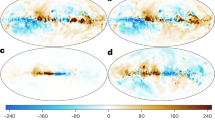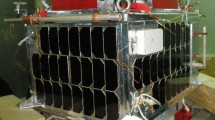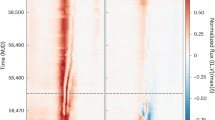Abstract
SMITH1 has given an upper limit to the interstellar magnetic field in the direction of the pulsating radio source CP 0950 derived from measurements of its Faraday rotation. This limit, < 2 × 10−7 gauss for a component directed towards the Earth, is, as Smith points out, much less than other existing estimates. Furthermore, it is significant that the contribution to the total rotation from the Earth's ionosphere implied by this limit is considerably lower than one would expect for the local time of the observations. In this communication we suggest that the observations as described are compatible with an interstellar field component of about 10−6 gauss directed towards the source and with a larger rotation contribution from the ionosphere.
This is a preview of subscription content, access via your institution
Access options
Subscribe to this journal
Receive 51 print issues and online access
$199.00 per year
only $3.90 per issue
Buy this article
- Purchase on SpringerLink
- Instant access to full article PDF
Prices may be subject to local taxes which are calculated during checkout
Similar content being viewed by others
References
Smith, F. G., Nature, 218, 325 (1968).
Roger, R. S., J. Atmos. Terr. Phys., 26, 475 (1964).
Morris, D., and Berge, G. L., Astrophys. J., 139, 1388 (1964).
Gardner, F. F., and Davies, R. D., Austral. J. Phys., 19, 129 (1966).
Lyne, A. G., and Rickett, B. J., Nature, 218, 326 (1968).
Author information
Authors and Affiliations
Rights and permissions
About this article
Cite this article
ROGER, R., SHUTER, W. Interstellar Magnetic Field. Nature 218, 1036 (1968). https://doi.org/10.1038/2181036a0
Received:
Issue date:
DOI: https://doi.org/10.1038/2181036a0
This article is cited by
-
Interstellar Magnetic Field
Nature (1968)



